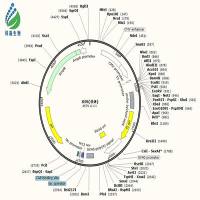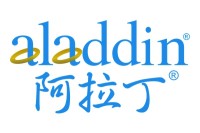mtDNA Variation and Analysis Using Mitomap and Mitomaster
互联网
- Abstract
- Table of Contents
- Figures
- Literature Cited
Abstract
The Mitomap database of human mitochondrial DNA (mtDNA) information has been an important compilation of mtDNA variation for researchers, clinicians, and genetic counselors for the past 25 years. The Mitomap protocol shows how users may look up human mitochondrial gene loci, search for public mitochondrial sequences, and browse or search for reported general population nucleotide variants as well as those reported in clinical disease. Within Mitomap is the powerful sequence analysis tool for human mitochondrial DNA, Mitomaster. The Mitomaster protocol gives step?by?step instructions showing how to submit sequences to identify nucleotide variants relative to the rCRS, determine the haplogroup, and view species conservation. User?supplied sequences, GenBank identifiers, and single?nucleotide variants may be analyzed. Curr. Protoc. Bioinform . 44:1.23.1?1.23.26. © 2013 by John Wiley & Sons, Inc.
Keywords: biological database; information retrieval; human mitochondrial DNA; haplogroups; species conservation; GenBank sequences; single nucleotide variants
Table of Contents
- Introduction
- Basic Protocol 1: Exploring mtDNA Variants with Mitomap
- Basic Protocol 2: Analyzing mtDNA Variants with Mitomaster
- Guidelines for Understanding Results
- Commentary
- Literature Cited
- Figures
Materials
Figures
-
Figure 1.23.1 The home page of http://www.mitomap.org. View Image -
Figure 1.23.2 Essential mtDNA Background Information. View Image -
Figure 1.23.3 The rCRS. View Image -
Figure 1.23.4 Complete Mitochondrial DNA Sequences. View Image -
Figure 1.23.5 The human mitochondrial genetic code. View Image -
Figure 1.23.6 Haplogroup frequency estimates. View Image -
Figure 1.23.7 Diagnostic RFLP and SNPs for major haplogroups. View Image -
Figure 1.23.8 mtDNA haplogroup migration map. View Image -
Figure 1.23.9 Simplified mitochondrial haplogroup relationships. View Image -
Figure 1.23.10 Mitochondrial functional locations. View Image -
Figure 1.23.11 Gene map of the human mitochondrial DNA with representative disease variants shown. View Image -
Figure 1.23.12 (A ) Search box for specific variant(s). (B ) Search box for specific variant(s). In this example, a single position is queried. (C ) Results for variant search. In this example, a range was queried. This screenshot shows only a portion of the results returned. View Image -
Figure 1.23.13 Links to Mitomap Variants. Variants are organized into two categories—general variants (top section) and those with reports of possible disease‐associations (lower section). View Image -
Figure 1.23.14 (A ) Control Region Variants. (B ) Outside of the Control Region: Coding and RNA Variants. View Image -
Figure 1.23.15 Variant information can be sorted. View Image -
Figure 1.23.16 Details of GB set frequency. View Image -
Figure 1.23.17 GenBank ID links to sequence. View Image -
Figure 1.23.18 Pub Med ID links to publication. View Image -
Figure 1.23.19 Predicted Haplogroup links to total listing of sequences with that haplogroup in the GenBank sequence set. View Image -
Figure 1.23.20 Mitomaster analysis report on each sequence. View Image -
Figure 1.23.21 Reported Coding and Control Region mutations found in patients. View Image -
Figure 1.23.22 Reported rRNA and tRNA mutations found in patients. View Image -
Figure 1.23.23 Sample Sequence EU915478 at GenBank. View Image -
Figure 1.23.24 Send FASTA dialog box. View Image -
Figure 1.23.25 Submit Sequence screen. View Image -
Figure 1.23.26 Alignment Summary. View Image -
Figure 1.23.27 rCRS Track View. View Image -
Figure 1.23.28 Sequence Alignment, areas of interest circled. View Image -
Figure 1.23.29 Alignment Details. View Image -
Figure 1.23.30 Alignment Details with areas of interest circled. View Image -
Figure 1.23.31 (A ) Conservation Grid. (B ) Conservation Grid of Species. View Image -
Figure 1.23.32 Submitting GenBank Identifiers. View Image -
Figure 1.23.33 Single Nucleotide Variant Submission. View Image -
Figure 1.23.34 SNV submission format option 1: a four‐column tab‐delimited format consisting of sample name, rCRS mitochondrial position, reference base, and query base (sample, pos, ref and var). View Image -
Figure 1.23.35 SNV submission format option 2: a more compact non‐delimited reference‐position‐query format is also permitted, with or without sample names. View Image -
Figure 1.23.36 SNV submission format option 3: indels can be represented using the adjacent‐base notation (C573CC) or with the use of decimal positions (573.1C), explicitly (573insC), or using dash or colon symbols (:573C). View Image
Videos
Literature Cited
| Anderson, S., Bankier, A.T., Barrell, B.G., de Bruijn, M.H., Coulson, A.R., Drouin, J., Eperon, I.C., Nierlich, D.P., Roe, B.A., Sanger, F., Schreier, P.H., Smith, A.J., Staden, R., and Young, I.G. 1981. Sequence and organization of the human mitochondrial genome. Nature 290:457‐465. | |
| Andrews, R.M., Kubacka, I., Chinnery, P.F., Lightowlers, R.N., Turnbull, D.M., and Howell, N. 1999. Reanalysis and revision of the Cambridge reference sequence for human mitochondrial DNA. Nat. Genet. 23:147. | |
| Kloss‐Brandstatter, A., Pacher, D., Schonherr, S., Weissensteiner, H., Binna, R., Specht, G., and Kronenberg, F. 2011. HaploGrep: A fast and reliable algorithm for automatic classification of mitochondrial DNA haplogroups. Hum. Mutat. 32:25‐32. | |
| van Oven, M. and Kayser, M. 2009. Updated comprehensive phylogenetic tree of global human mitochondrial DNA variation. Hum. Mutat. (Online) 30:E386‐E394. | |
| Wallace, D.C., Lott, M.T., Brown, M.D., Huoponen, K., and Torroni, A. 1995. Report of the committee on human mitochondrial DNA. In Human Gene Mapping 1994, a Compendium (A.J. Cuticchia ed.) pp. 910‐954. The Johns Hopkins University Press, Baltimore, Md. | |
| Yao, Y.G., Salas, A., Logan, I., and Bandelt, H.J. 2009. mtDNA data mining in GenBank needs surveying. Am. J. Hum. Genet. 85:929‐933. | |
| Key References | |
| Stajich, J.E., Block, D., Boulez, K., Brenner, S.E., Chervitz, S.A., Dagdigian, C., Fuellen, G., Gilbert, J.G., Korf, I., Lapp, H., Lehvaslaiho, H., Matsalla, C., Mungall, C.J., Osborne, B.I., Pocock, M.R., Schattner, P., Senger, M., Stein, L.D., Stupka, E., Wilkinson, M.D. and Birney, E. 2002. The Bioperl toolkit: Perl modules for the life sciences. Genome Res. 12:1611‐1618. | |
| Supporting publication for Bioperl. | |
| Steinbiss, S., Gremme, G., Scharfer, C., Mader, M., and Kurtz, S. 2009. AnnotationSketch: A genome annotation drawing library. Bioinformatics 25:533‐534. | |
| Supporting publication for AnnotationSketch | |
| Zaragoza, M.V., Brandon, M.C., Diegoli, M., Arbustini, E. and Wallace, D.C. 2011. Mitochondrial cardiomyopathies: How to identify candidate pathogenic mutations by mitochondrial DNA sequencing, MITOMASTER and phylogeny. Eur. J. Hum. Genet. 19:200‐207. | |
| Yao et al., 2009. See above. | |
| Internet Resources | |
| http://www.mitomap.org | |
| Mitomap. | |
| http://mitomaster.mitomap.org | |
| Mitomaster. | |
| http://www.phylotree.org | |
| Phylotree. | |
| http://haplogrep.uibk.ac.at/ | |
| Haplogrep. | |
| http://www.ncbi.nlm.nih.gov | |
| NCBI. | |
| http://blast.ncbi.nlm.nih.gov/ | |
| BLAST. | |
| http://www.ncbi.nlm.nih.gov/nuccore/NC_012920.1 | |
| The rCRS: Homo sapiens mitochondrion, complete genome. | |
| http://www.bioinformatics.nl/tools/crab_fasta.html | |
| FASTA format. |




![四[N-邻苯二甲酰-(S)-叔亮氨酸基]二铑双(乙酸乙酯)加合物;154090-43-4;Elemental analysis(Nitrogen) 3.30 to 4.50 %;V66234-25mg](https://img1.dxycdn.com/p/s14/2025/1029/004/8672158669127143891.jpg!wh200)




